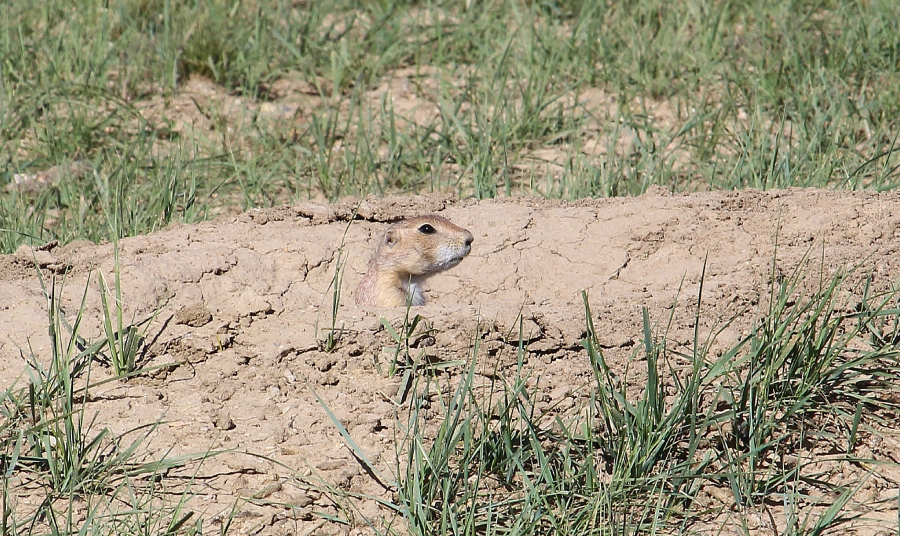They’re cute, they’re cuddly, they carry bubonic plague. Although adorable, prairie dogs are outrageously destructive and cause injury or even death to the cattle that also occupy the land. The holes that they live in become such a hazard that many farmers will actually pay YOU to shoot them. Hedging the population helps to keep their numbers manageable while eliminating the communicable diseases that they carry, which is, yes, the same plague that nearly wiped out Europe during the Middle Ages.
Why Hunt Prairie Dogs?
Aside from benefitting the environment, hunting prairie dogs, ground squirrels, and the like is an excellent way to practice your real-world marksmanship skills, as the targets are at uneven yardages and, if you leave your rangefinder at home, offer a chance to work on range estimation and unknown distance shooting. Picking the right scope for the job takes careful consideration, as although similar, these are not the same scopes that you would pick for PRS-style shooting. My go-to is the Sightmark Latitude 10-40x60, as it offers the perfect combination of magnification and precision.
Why 10-40x Magnification Is Perfect for Varmint Hunting
Let’s start with the power, as 10x might seem too excessive for the closer stuff. Well, when you consider that a prairie dog is the size of your average grey squirrel, this magnification is downright necessary to resolve its body at distances as short as 100 yards. Sure, magnification eats into your field of view, but with a 60mm objective lens, you have FOV to spare. A good morning on the field will leave you with dogs no closer than 500 yards after a few shots, so this is where the 40x comes in. This top-end magnification is critical for spotting hiding varmints against their mounds, which are nearly the same color.


Second Focal Plane: The Reticle Advantage for Varmint Work
Some might be surprised to read that the reticle is set into the second focal plane, as first focal plane optics have taken center stage lately. In an application where range estimation needs to be accomplished on the clock, it makes sense. However, prairie dogs bask in the same spot for hours, giving you plenty of time to dial the 10-40x Latitude to full power to determine their range. This gives you the benefit of a fine crosshair at higher magnifications as well as one that is more visible at lower power settings. First focal plane systems aren’t without their flaws. At lower magnifications, in many cases, the reticle scales down to be so small it’s no longer visible, and determining the actual center point becomes challenging. Crank it up too high, and the crosshairs become so thick that they cover most of a prairie dog. There’s no argument; second focal plane is your best bet for hunting these critters.

Fine-Tuned Precision: Why 1/8 MOA Clicks Matter
It's almost an oddity today; this Latitude is built with 1/8 MOA clicks. This finer scale allows for more precise adjustments. To put it in perspective, the estimated width of your average prairie dog is approximately four inches high when on all fours. At 800 yards, a ¼ MOA click is going to move you two inches, which doesn’t leave a lot of forgiveness on either side. A 1/8 MOA click only moves you one inch, allowing you to center punch that rodent as long as your DOPE is good.
34mm Tube: More Elevation Travel for Long-Range Shots
The last feature that I consider of critical importance is the 34mm main tube. If you came here to read about how that increases light transmission, I’m sorry to disappoint you. Although tube size has a slight impact on this quality, its larger purpose is to allow for more erector tube travel. This scope-within-a-scope is what your turrets click against when you make an adjustment. With 34mm of room, you get a tremendous amount of come-up, with my sample yielding a total of 112 MOA adjustment. This is enough to send nearly any round beyond its usable range, even without canted hardware.

Final Thoughts: Affordable Optic, Maximum Performance
With quality glass, all you’ll need is a good flat-shooting rifle, and you are set to send prairie dogs sky-high. Aside from that, I highly recommend a portable shooting bench, as the elevated position will help you to see more targets. I’ll close with what is perhaps the best part about this optic, which is that it retails for less than $700. This leaves you plenty of budget for a moderately priced rifle, peripheral equipment, and, of course, plenty of ammunition.
For more information, visit https://sightmark.com/collections/latitude
Have a great outdoor adventure story? Share it with us! Accepted stories will receive a 20% discount code.
Frequently Asked Questions
What are some benefits of hunting prairie dogs and ground squirrels?
Hunting these animals benefits the environment and provides an opportunity to practice real-world marksmanship skills.
What is the recommended scope for varmint hunting?
The Sightmark Latitude 10-40x60 scope is recommended for varmint hunting due to its magnification and precision.
Why is 10-40x magnification considered perfect for varmint hunting?
10-40x magnification is necessary to resolve the small body of a prairie dog even at short distances, while the 40x magnification helps in spotting hiding varmints against their mounds.
Why is the reticle set in the second focal plane for varmint hunting scopes?
Second focal plane reticles are beneficial for varmint hunting as they offer a fine crosshair at higher magnifications and better visibility at lower power settings, making range estimation easier.
Why are 1/8 MOA clicks important for precision in varmint hunting?
Scopes with 1/8 MOA clicks allow for more precise adjustments, which is crucial for accurately targeting small varmints like prairie dogs.





